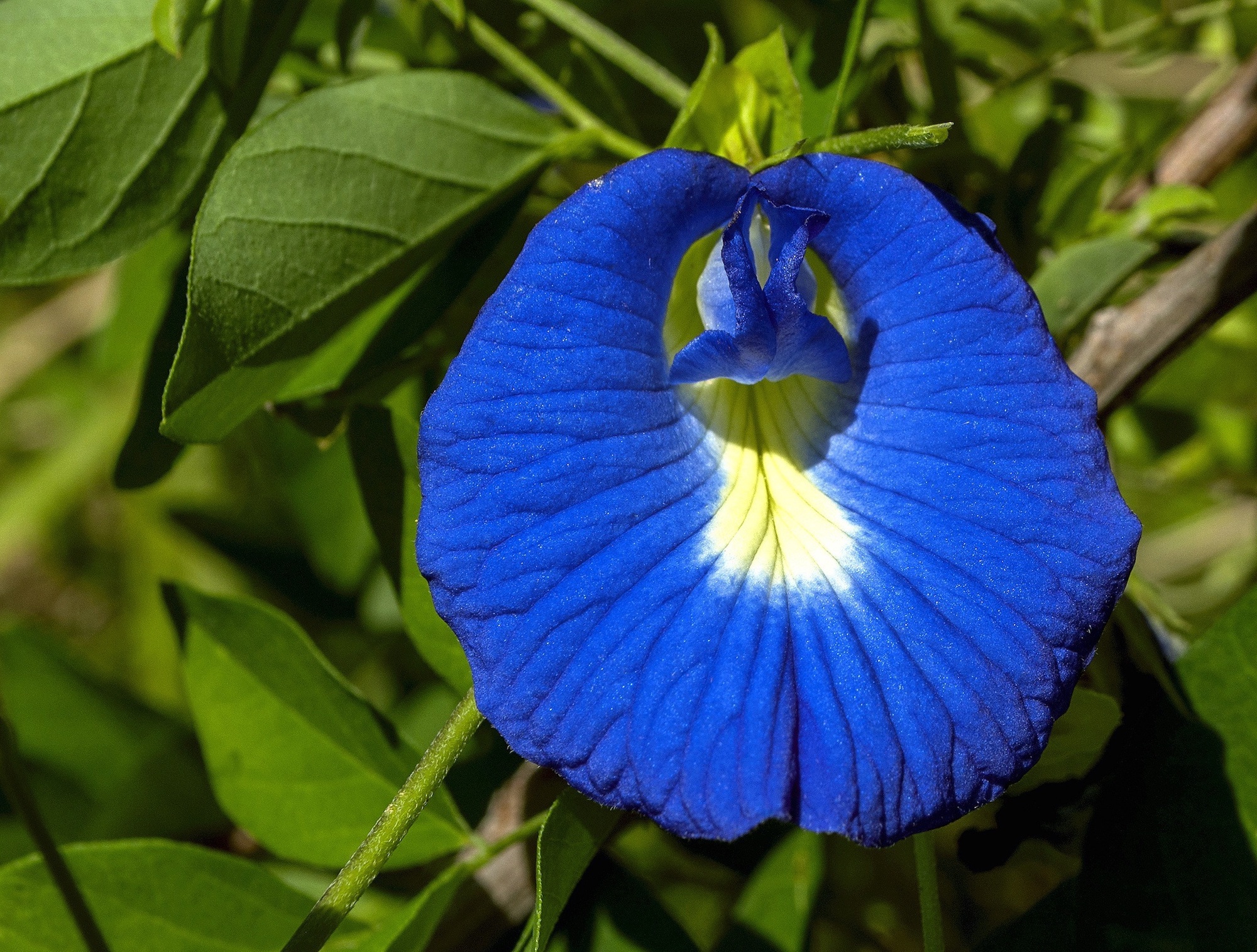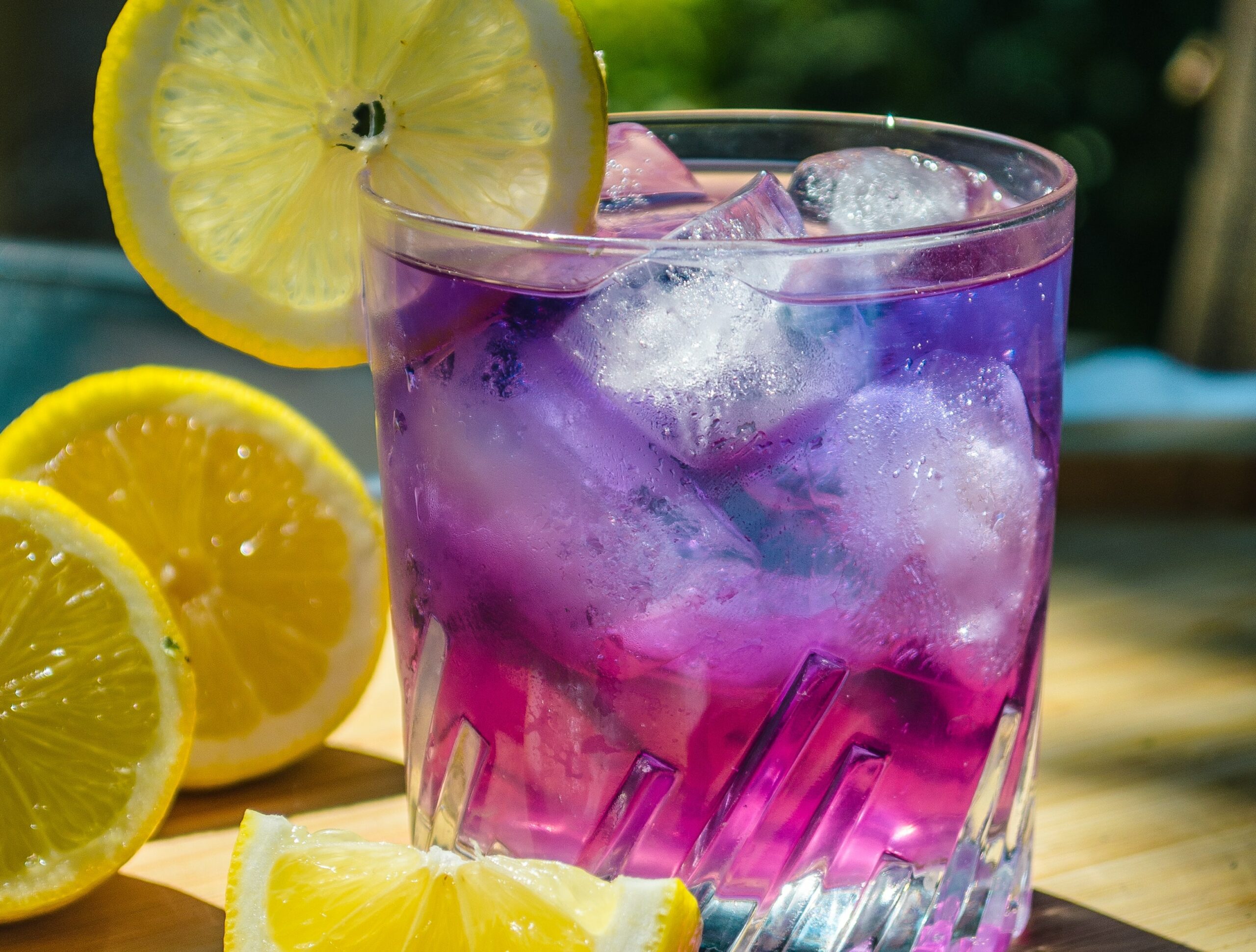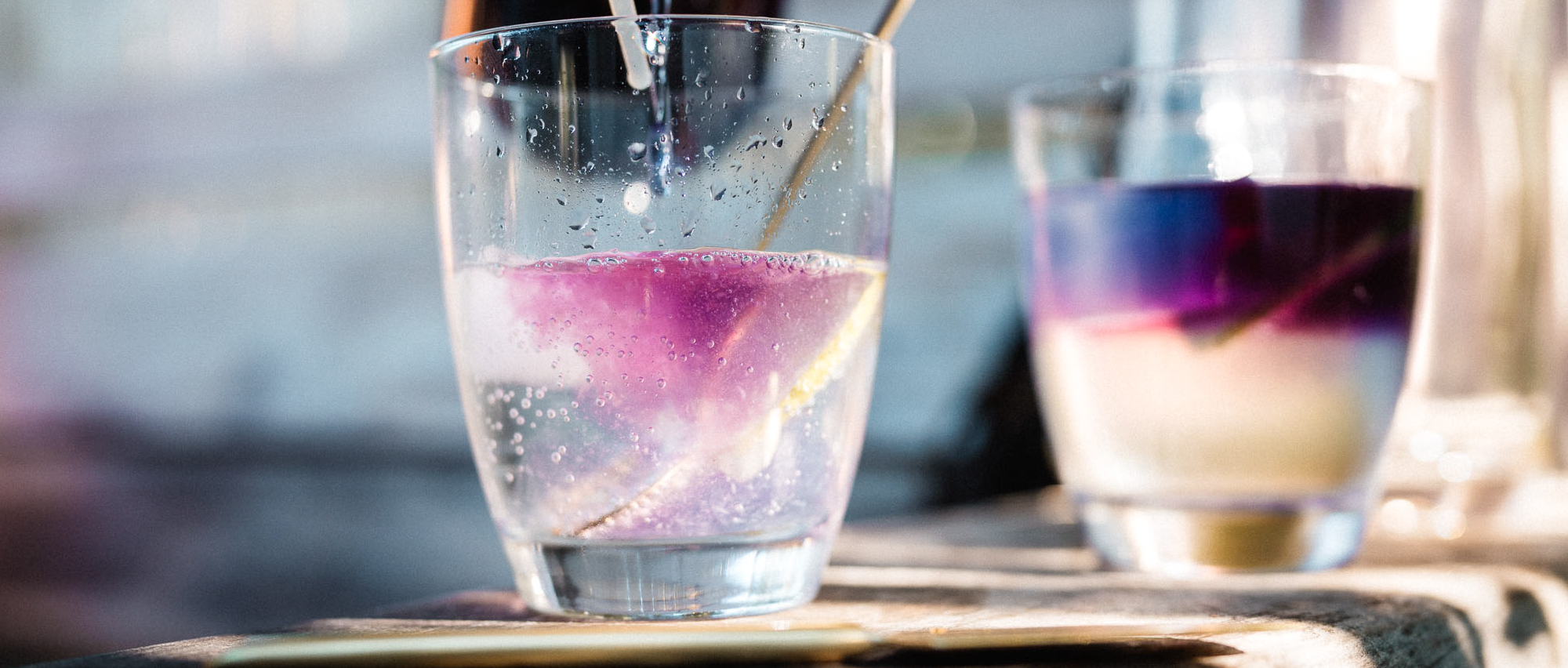Clitora ternatea
ENCYCLOPEDIA BOTANICA / BUTTERFLY PEA
This wonderfully-named botanical is known more for its colour than its flavour, as it has only the mildest taste and scent. At The Alembics Lab we use it a lot in infusions for its beautiful, deep indigo pigment with alchemical colour-changing properties.
Description & Habitat
This fast-growing trailing vine is from the Fabaceae family which houses the legumes (peas and beans). Butterfly pea is also known as Asian pigeonwings, blue pea, bluebellvine or Darwin pea, but it’s the scientific name that often raises eyebrows. Clitoria ternatea is named for what it looks like—the flower is labial, with an open, full lip of dark blue and a small, white centre. There are two small wings that surround the pistil, making the flower resemble a vulva and clitoris. The second part of the binomial ‘ternatea’ comes from the Indonesian island of Ternate, where it was found growing—though the plant could have originated in either Asia or South America. Butterfly pea is grown commercially in Vietnam and Thailand, but will grow in most temperate, frost-free climates.
Parts used: Flowers, when open, are harvested and dried for use. Other parts of the plant (leaves, fresh pods and shoots) are all edible, but not of significant use in distillation and extraction.

Butterfly pea flower

Colour changing with pH levels
Aroma & Flavour Profile
The fresh flowers have very little scent, and a mild sweet taste. Dried flowers have a vegetative note with a hint of fungi, no discernible bitterness and are slightly mucilaginous when eaten. Butterfly pea tea is mild, with subtle woody, grassy and earthy tones. It’s been described as like a ‘light’ green tea, and this mild flavour profile has made it a popular food colourant and natural dye. It’s definitely not a green tea though, instead it’s a stunning deep indigo.

Recommended techniques
• Simple infusions (tea/dying) • Tincture •
Uses
Teas and infusions
The dried flowers have been used to make tea for centuries, and it has special significance in Ayurveda. The vibrant blue petals of the butterfly pea plant are rich in anthocyanins, the same polyphenol compounds found in blueberries, tart cherries, purple cabbage and other blue, red or purple produce. As their colour suggests, they are rich in antioxidants and have been used historically as a therapeutic, antioxidant tea (at The Alembics Lab, we often like to pair it with ginger, to sharpen and lift the flavour). The colour in the flowers is water-soluble so when infused the tea becomes a deep, vibrant blue. If lemon (or any other acid) is added to the tea, it will blush pinker, and take on a more violet colour, due to the colour-changing anthocyanins present, which alter hue with pH levels.
Culinary
The flowers (and many other parts of this plant) are edible, but again, it’s the pigment that’s most widely used—primarily in natural food colourings. In Southeast Asia, it's used to tint rice in both savoury and sweet dishes. Butterfly pea pigment is very heat stable, giving it broad applications—the colouring is used commercially in yoghurts, ice cream, chewing gum and sports drinks. It’s a safe and fun botanical to experiment with in the home kitchen.
Spirits
Popular in the spirits and cocktail-making industries, butterfly pea is the reason why those gins are deep inky blue—an extract of the flower is added post distillation. It’s pH indicator molecule when mixed with an acid (like tonic, which has citric acid in it) blushes violet-pink. Make a dark blue tincture of the flowers in 40%ABV spirit, and you’ll have an alchemical potion for colour-changing cocktails. You only need a few drops.
Natural dye
Delphinidin is the key anthocyanin behind butterfly pea’s colour range, and is the reason why infusions of butterfly pea have been used as a natural food dye for centuries. Increasing awareness of the potential problems with synthetic dyes has lead to recent investigations into butterfly pea's use as a textile dye. And the results are promising. Experiments with different mordants (including citric acid) and repeated dying can give a range of hues.


